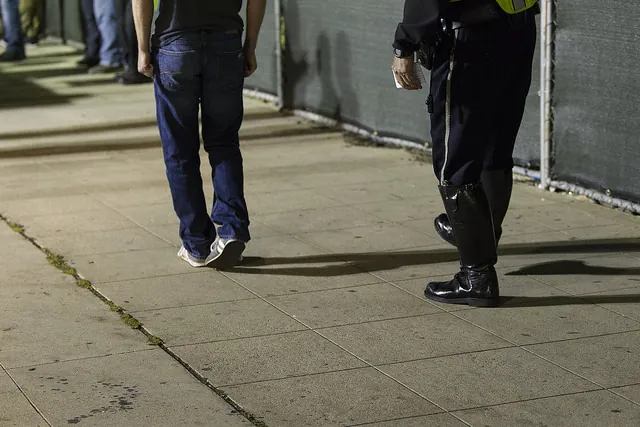 If you are ever stopped by a law enforcement officer and the officer suspects that you are driving under the influence of alcohol (DUI) or drugs (DUID) you will likely be asked a series of questions and then asked to perform a series of “field sobriety tests.” These field sobriety tests, or FSTs, will be used to decide if the officer has probable cause to arrest you. If you have already been through a traffic stop that resulted in your arrest for DUI, you likely attempted the FSTs and allegedly failed. Many motorists feel they performed fairly well on the FSTs; yet, they were arrested none the less and charged with DUI. If you agreed to the FSTs and were ultimately arrested, you may be wondering if a DUI attorney can explain the tests to you. Your performance on the FSTs is one of the many things an experienced Nebraska DUI attorney should indeed discuss with you when preparing your defense. In the meantime, it may help to gain a better understanding of how the field sobriety tests are supposed to work as well as how they really work when administered by the average patrol officer.
If you are ever stopped by a law enforcement officer and the officer suspects that you are driving under the influence of alcohol (DUI) or drugs (DUID) you will likely be asked a series of questions and then asked to perform a series of “field sobriety tests.” These field sobriety tests, or FSTs, will be used to decide if the officer has probable cause to arrest you. If you have already been through a traffic stop that resulted in your arrest for DUI, you likely attempted the FSTs and allegedly failed. Many motorists feel they performed fairly well on the FSTs; yet, they were arrested none the less and charged with DUI. If you agreed to the FSTs and were ultimately arrested, you may be wondering if a DUI attorney can explain the tests to you. Your performance on the FSTs is one of the many things an experienced Nebraska DUI attorney should indeed discuss with you when preparing your defense. In the meantime, it may help to gain a better understanding of how the field sobriety tests are supposed to work as well as how they really work when administered by the average patrol officer.
The Basics of a DUI Stop
An investigation for driving under the influence can begin in a number of ways. Sometimes an officer just happens to pull over a motorist for a minor traffic violation and then begins to suspect the motorist is under the influence; however, more often than not an officer has reason to believe the motorist is under the influence before deciding to pull him/her over and then uses that minor traffic infraction as a pretext for making the stop. Once the motorist is stopped, the officer will start asking the driver basic questions relating to his/her identity along with apparently harmless questions about where the driver was going and where he/she is coming from when stopped. At some point during the questioning the officer will ask the driver if he/she has been drinking or is taking any medication/using any drugs. In most cases, the answer to that question is all but immaterial because the officer has already decided to perform the field sobriety tests based on the belief that the driver is operating the vehicle while under the influence. If you find yourself in this position, you need to know that you have the right to refuse to perform the FSTs. Moreover, the results of the FSTs cannot be admitted into court; however, they can be used to establish the probable cause needed to arrest you.
Standard Field Sobriety Tests
A law enforcement officer can use any test he/she wants to help determine if a motorist is under the influence; however, only three tests have been given the seal of approval by the National Highway Traffic Safety Administration (NHTSA). Therefore, these three tests are what are commonly used when performing field sobriety tests. The three standardized tests include:
- The Horizontal Gaze Nystagmus (HGN) Test: Horizontal gaze nystagmus is an involuntary jerking of the eyeball which occurs as the eyes gaze to the side. Under normal circumstances, nystagmus occurs when the eyes are rotated at high peripheral angles. However, when a person is impaired by alcohol, nystagmus is exaggerated and may occur at lesser angles. An alcohol impaired person will also often have difficulty smoothly tracking a moving object. In the HGN test, the officer observes the eyes of a suspect as the suspect follows a slowly moving object such as a pen or small flashlight, horizontally with his eyes. When performed correctly, and under optimum conditions, the HGN test is a good indicator of impairment. In reality, however, the test is rarely performed correctly nor under optimum conditions.
- Walk and Turn Test — the subject is directed to take nine steps, touching heel-to-toe, along a straight line. After taking the steps, the suspect must turn on one foot and return in the same manner in the opposite direction.
- One Leg Stand Test –– the subject is instructed to stand with one foot approximately six inches off the ground and count aloud by ones beginning with one thousand (one thousand-one, one thousand-two, etc.) until told to put the foot down. The officer times the subject for 30 seconds.
In the HGN test the officer is looking for physical clues that indicate impairment. In the Walk and Turn and One Leg Stand test the officer is looking for clues that indicate a lack of balance and/or coordination, the inability to remember and/or follow instructions, and other similar signs of impairment.
Contact Us
If you have been arrested and charged with driving under the influence in Nebraska contact the Petersen Law Office 24 hours a day at 402-513-2180 to discuss your case with an experienced DUI defense attorney.

